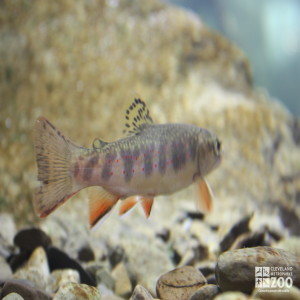Brook Trout
[Salvelinus Fontinalis]

The body of the Brook Trout is elongated with an average length of 15 to 20 inches and an average weight of 2.2 to 13.2 lbs. The body has its greatest depth at, or in front of, the origin of the dorsal fin. It also has an adipose fin and a caudal fin that are slightly forked. Coloration is very distinct and can be spectacular. The back of the brook trout is dark, olive-green to almost black. Sides are lighter becoming silvery white ventrally. On the back and top of the head are wormy cream colored wavy lines which break up into spots on the side. The fins are also distinct. The dorsal and caudal fins have black lines and the anal, pelvic and pectoral fins have white edges followed by black then reddish coloration.
Location: Wolf Wilderness Lodge
Share:
Range
the range of the brook trout is the northeastern part of Canada and the United States. Also has been introduced in North America, South America, New Zealand, Asia and many parts of Europe.
Habitat
Clear, cool, well-oxygenated freshwater rivers and lakes, close to shore. Brook trout thrive in temperatures that remain below 18.8 C (66 F)
Conservation Status
Primary Threats
Gestation
The total time of incubation depends on factors such as temperature and oxygen.
Litter
Behavior
Brook trout behavior varies greatly depending on habitat. Some populations travel great distances to spawn others travel comparatively short distances upstream. There is a high amount of territorial behavior found in brook trout. Territory is established shortly after emergence from the reed as a result of aggressive behavior which increases when factors such as current velocity and the availability of food heighten.
Reproduction
Brook trout reach maturity on an average at the age of 2 and spawn once every year in late summer or autumn. Spawning grounds require loose clean gravel with a good supply of upwelling, oxygen-rich water. The female clears away debris and salt with rapid fanning of her caudal fin while on her side creating a redd which is a pit 4-12 inches in depth. Males compete for the spawning by nipping and displaying themselves to the competitor males. During spawning, eggs and milt are simultaneously discharged. After spawning, the female digs slightly upstream from the redd and lets the current carry down gravel to fill the redd. After hatched, the fry stay until the yolk sac is absorbed them swim up and out.
Wild Diet
Food habits vary according to life and history stage. A brook trout will eat virtually anything its mouth will accommodate. Anything from mayflies and midges to worms and frogs and even small mammals like voles.

